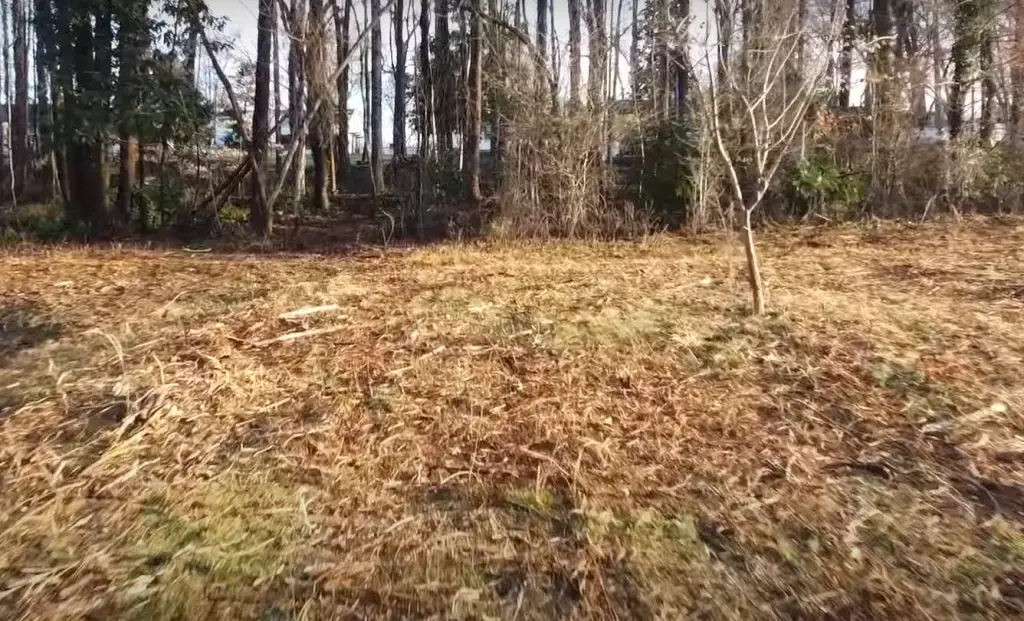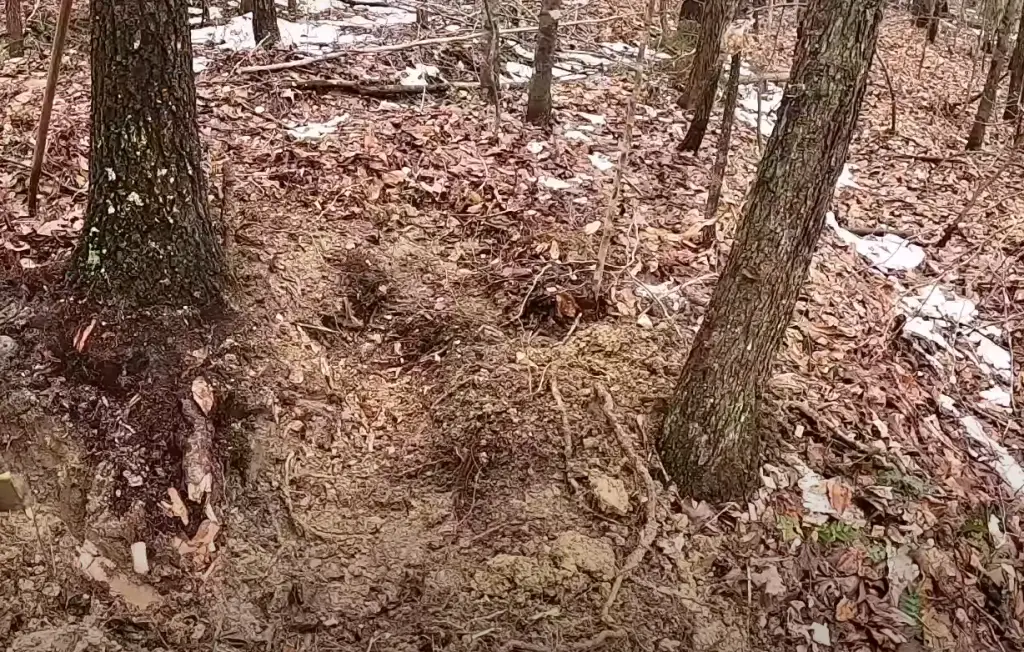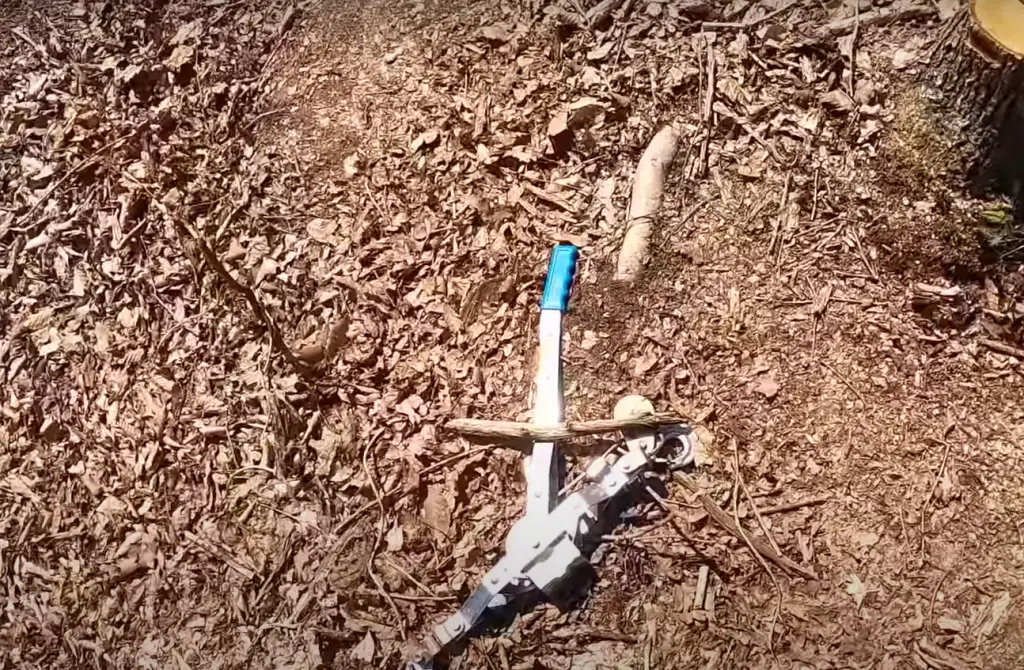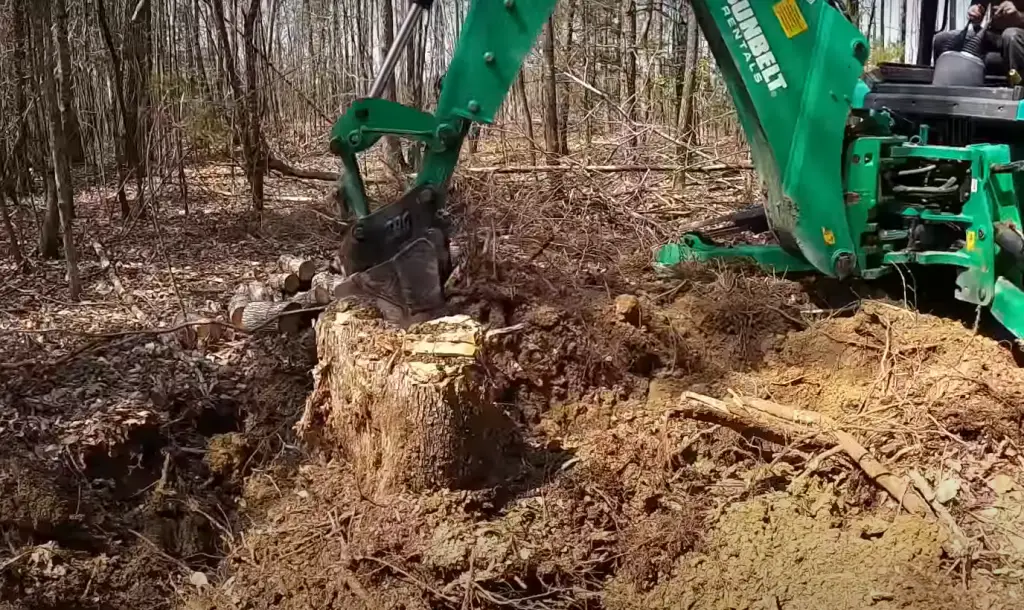Are you looking for an effective and efficient approach to clearing brush on hillside terrain? Keeping this land undeveloped not only improves the aesthetic beauty of a region, but it also helps keep local wildlife habitats safe. If so, then you’re in luck! This blog post will provide you with comprehensive information on the most effective method for clearing brush on a hillside – including materials needed, the different stages involved in the process, safety considerations and tips & tricks for making your project successful. Additionally, as we dive into our guidebook of strategies and methods surrounding brush removal from these tough-to-reach areas, learn how doing so can make a positive impact on both your property and local habitat alike. Let’s get started!
What Is Brush and Why Should It be Cleared?
Brush, a collection of plants and small trees, can often be found growing along roadsides, near power lines, and on the outskirts of neighborhoods. While some may appreciate the natural beauty it provides, brush can pose serious safety risks.

During a fire, brush can quickly catch flame and rapidly spread throughout an area, putting homes and lives in danger. Additionally, brush can be a hindrance to construction projects or infrastructure repairs if left uncleared.
It allows for better visibility and access, which in turn can enhance the overall value of the surrounding properties. [1]So, if you have unsightly brush growing on your hillside or would like to develop the area for utilities or construction purposes, then it’s important to consider various techniques for clearing the brush.
When Is the Best Time to Remove Brush?
Knowing when to remove brush is an important question for both homeowners and those in charge of larger areas of land. Timing is key, as removing brush at the wrong time can cause a host of problems. Generally speaking, it’s best to remove brush during the dormant season, which is typically late fall through early spring. This is because vegetation is less likely to be actively growing and is therefore easier to manage. [2] However, if you’re dealing with invasive species or particularly dry areas, removing brush may need to happen more frequently or in a more specific timeframe. It’s always best to consult with your local fire department or forestry service for guidance and recommendations on when to remove brush on your property.
Brush Clearing Equipment
An essential part of potting soil care is having the right equipment for clearing away debris from the surface. Brush clearing tools, such as a string trimmer, brush mower, stump grinder or brush grubber, are all necessary for keeping potting soil in top condition.
String Trimmer With Blade Attachments
When it comes to brush clearing equipment, a string trimmer with blade attachments is an excellent choice for tackling tough foliage. It is especially useful in areas with tall grass, brush, and weeds that need to be cut down. The blade attachments allow for increased versatility, making it easy to take on dense vegetation such as saplings and shrubs. When selecting the right blade for your needs, it’s important to consider the thickness of the material you’ll be cutting.

With the right blade attachment, a string trimmer can easily handle even the toughest jobs. Plus, many models are designed to be lightweight and easy to maneuver, so you can work for extended periods without feeling too fatigued. If you’re looking for a powerful and versatile tool to help you tackle brush clearing, a string trimmer with blade attachments is an excellent choice.
Brush Mower
If you need a mower that can handle tougher jobs, a brush mower is a suitable option. This specialized piece of equipment is designed with a heavy-duty blade that can easily cut through thick brush and undergrowth, leaving a clean and clear space behind. Brush mowers are typically mounted on tractors, skid steers, or other heavy equipment, making them ideal for larger properties and commercial applications. With their rugged construction and powerful performance, it’s no wonder that brush mowers have become a go-to choice for landowners and property managers looking to maintain a tidy and manicured landscape. Whether you’re clearing a trail, maintaining a pasture, or prepping for a construction project, a brush mower is a valuable investment that will pay off in time and efficiency.
Stump Grinder
When a tree is removed, the remaining stump can be an eyesore on your landscape. A stump grinder makes it easy to remove this obstruction, leaving behind a tidy and level area. With its powerful engine and sharp cutting teeth, it can make quick work of even the largest of stumps. The stump grinder can be used for both commercial and residential purposes, making it an ideal choice for property owners and landscapers alike. It is a reliable and safe piece of equipment that will help you clear your land, creating more space for new projects or developments. Whether you are removing stumps for landscaping or construction purposes, a stump grinder is an essential tool that will save you time and energy in the process.
Brush Grubber
If you’re looking for something more compact and convenient, a brush grubber may be the perfect solution. The brush grubber is a highly effective tool designed to make brush clearing easier and faster than ever before. This innovative piece of equipment can grip and pull brush, roots, and small trees with ease, making light work of even the thickest and tallest of growth. Featuring a durable and easy-to-use design, the brush grubber is perfect for anyone looking to clear brush in their yard, on a farm, or out in the wilderness.
Preparation – Before Getting Started
No matter which piece of equipment you decide to use for brush clearing, it’s important to make a few preparations before getting started.
Check Local Laws
Before jumping into brush clearing projects on your property, it’s important to check local laws and regulations. Every county, city, and state can have different requirements when it comes to vegetation removal and land management. Some areas may require permits or approval before beginning any clearing work, while others may have set guidelines on how much vegetation can be removed.

Knowing the local laws beforehand can save you from potential fines and legal trouble down the line. Additionally, it can ensure that you approach brush clearing in a safe and responsible manner, considering factors such as wildlife habitats and soil erosion. Take the time to research and understand local laws before getting started to ensure a successful and legal brush clearing project.
Remove Obstacles
Removing obstacles before clearing brush is a crucial step to ensure a safe and efficient process. These obstacles can range from fallen tree branches to rocks and debris. It is important to assess the area thoroughly before beginning any work and remove any hazardous materials from the work zone. By doing this, you are preventing potential accidents or injuries to yourself or anyone assisting you. Additionally, removing obstacles can save you time and energy in the long run. Jumping over logs or maneuvering around rocks can slow down the process, resulting in a less productive work session. Overall, taking the time to remove obstacles beforehand can greatly benefit the outcome of your brush clearing project.
Mark Things You Want To Keep
Another important step to prepare for a brush clearing project is to mark things you want to keep. This proactive measure will ensure that you don’t accidentally remove any valued plants, decorations, or important objects in your yard. If you have any particular landmarks, be sure to identify them visibly so that they remain intact. Use bright spray paint or flags to denote the areas with items you wish to keep. Not only will marking these features protect them, but it will also save you from time-consuming replacements and repairs later. By taking a bit of time to mark the things you want to keep, you’ll have a much more successful experience clearing brush.
Removing Brush, Vines, And Undergrowth
Brush removal is a necessary step for controlling the environment and vegetation in an area, particularly on hilly land. Unchecked brush can quickly overrun any terrain, leading to landslides, loss of soil topsoil, and other problems. Regularly clearing brush will also make it easier to take care of the potting soil and help improve its lifespan.
The first step to removing unwanted brush from a hilly area is identifying what species are present and if they are native or nonnative. Native plants provide important ecosystem services such as erosion control and habitat for wildlife. Nonnative plant species often outcompete native species for space and resources, so they should be removed with caution. [3]
After identifying which species need removal, the next step is to manually remove the brush. This can be done with a number of tools such as weed whackers, shovels, and scythes. It’s important to use caution when using any type of power tool on hillsides so that you don’t damage the soil or cause additional erosion.
In addition to removing brush, vines and other undergrowth can also need removal from hilly areas. Removing these plants by hand is the best way to get rid of them without causing further damage or destabilizing the soil. When working in hilly areas, it’s also important to use caution because accidentally cutting through roots could lead to landslides or other problems.
How To Remove Small Trees
Small trees can be removed from hilly areas, but it is important to use caution and the right tools. For small trees, it’s best to use a chainsaw or hand saw.
Additionally, make sure to check for any nesting animals in the tree before beginning work.When cutting down the tree, start by making a notch on the side of the tree facing away from the direction you want it to fall. This will help guide its descent and prevent damage to surrounding objects or individuals. Once this notch has been made, cut a wedge at least halfway through the trunk of the tree on either side until the tree begins to lean. Once the tree has been cut down, it’s important to remember that you’ll need to dispose of the debris properly. If possible, chip or burn the wood and use it as mulch or compost in your garden.
How To Make It Go Away
Once the unwanted brush, vines, and trees have been removed from your hilly area, there are a few ways to make sure it stays away for good.
Haul It
The first option is to haul away the debris. This can be done by renting a truck and gathering the debris into piles for easy pick-up.

Hauling away all of the brush will completely remove it from your property and provide a clean slate for you to work with. However, this option can be more expensive than others due to disposal costs and rental fees.
Mulch It
Another way to clear brush from hilly areas is to mulch it. Mulching is when organic material such as wood chips or leaves are used to cover up vegetation that has been cut down. This layer of organic matter helps suppress weed growth while also adding extra nutrients back into the soil as it breaks down over time. This option is a great way to ensure that the area remains free of chopped vegetation while also benefiting your potting soil. [4]
Burn It
The last option for brush removal from hilly areas is burning. Burning brush can be an effective and efficient way of removing unwanted plants and debris, but it should only be done in safe conditions with proper supervision. Be sure to check with local authorities before starting any burn piles. Additionally, keep a fire extinguisher close by in case the situation gets out of control or unexpected winds cause sparks to fly. No matter which method you choose when clearing brush from hilly areas, taking the time to do it right will ensure that your potting soil lasts longer and provides optimal growth for your plants.
How to Keep Brush From Growing Back?
For those who have experienced the frustration of constantly battling the regrowth of brush on their property, there are solutions available. The first step in keeping brush from growing back is to clear the area of any brush or debris that is already present. Once this is done, a mixture of herbicide and water can be applied to the soil to prevent any new growth from taking root. [5] It is important to note that these chemicals should be used carefully and in accordance with instructions to avoid any harm to nearby wildlife or vegetation. Another effective method of preventing brush growth is through regular mowing or trimming, to keep the area from becoming overgrown and allowing brush to establish itself once more. By employing these tactics, it is possible to maintain a clear and tidy outdoor space, free of unwanted brush growth.
Should I Clear Brush Myself or Hire a Pro?
When it comes to clearing brush around your property, there are a few things to consider. Firstly, the size and location of the area you need cleared will dictate whether it’s a job you can handle yourself or if you need to hire a professional. Secondly, your own level of experience and safety precautions should also be taken into account. While it may seem like a simple task, clearing brush can be very dangerous if you don’t have the proper tools and techniques.

Hiring a pro can ensure that the job is done safely and efficiently while also saving you time and energy. However, if you’re confident in your abilities and have access to the necessary equipment, tackling the task yourself is certainly an option. Ultimately, the decision of whether to clear brush yourself or hire a pro depends on your individual circumstances, so it’s important to weigh the pros and cons carefully before making a choice.
FAQ
What is the Cheapest Method of Clearing Land?
The cheapest method of clearing land is to clear it manually, without the use of any power tools. This can be done by hand using a shovel or hoe, or with a rake or brush cutter. Additionally, burning and mulching are two cheaper options for removing unwanted vegetation from an area.
What Kills Brush Permanently?
The most effective way to kill brush permanently is to apply herbicide, either as a spray or as a water-based solution. This should be done carefully and in accordance with directions to prevent any harm to nearby plants or animals. Additionally, regular trimming or mowing can help keep brush from reestablishing itself on the property. Finally, burning the area can also be an effective means of controlling unwanted vegetation growth.
How Do You Get Rid of Dead Vines?
Dead vines can be removed manually by cutting or pulling them from the ground. Alternatively, herbicide can be applied to the area where the vines are growing in order to prevent new growth and get rid of any remaining dead plants. Burning is also an option for removing dead vines from an area; however, this should only be done in safe conditions and with proper supervision. Finally, mulching over the area can help suppress weed growth while also providing extra nutrients back into the soil as it breaks down over time.
What Time of Year is Best to Clear Brush?
The best time of year to clear brush depends on your individual circumstances. Generally, early spring is the ideal time to start clearing brush since it allows plenty of time for the area to regrow before summer. Additionally, fall and winter are also good times to clear brush as long as there is minimal chance of frost or snow in the forecast.
How Can I Clear My Land Fast?
One of the best ways to clear land quickly is by using power tools such as chainsaws and brush cutters. These are fast and effective methods for cutting through thick vegetation, and they can help you finish the job in less time. Additionally, hiring a professional to do the job will also help speed up the clearing process.
What Are Some of the Challenges of Clearing Brush on a Hillside?
Clearing brush on a hillside presents a number of unique challenges. It is important to take extreme caution when tackling this task, as the terrain can be uneven and unstable. It is also difficult to access certain areas due to the steep grade, which can make it difficult to safely remove larger debris or use equipment. Additionally, the loose soil can cause avalanches and landslides if not handled carefully. Finally, dealing with harmful vines or invasive vegetation adds another layer of complexity to the task.
What Size Dozer is Best for Clearing Land?
The size of the dozer that is best for clearing land depends on the size and scope of the job.
For larger jobs, such as those involving trees or stumps, a mid-sized dozer will be your best bet. Finally, large-scale land clearing tasks may require the use of an industrial-grade bulldozer. Regardless of what size dozer you choose, it’s important to make sure that you are familiar with its operation before using it.How Do You Cut a Large Brush?
Cutting a large brush can be tricky and time-consuming, especially if you don’t have the right tools. The best way to tackle this task is to use a chainsaw or brush cutter.

These will make quick work of cutting through thick vegetation, and they are designed with safety features that help reduce the risk of injury. Additionally, using manual tools such as loppers or hedge trimmers can also be effective for tackling smaller patches of brush. Whichever method you choose, it’s important to exercise caution when working with any type of sharp blades or power tools.
Can a Bulldozer Push Over Trees?
Yes, a bulldozer is capable of pushing over trees. However, this should only be done with caution and proper safety protocols in place. Additionally, it’s important to remember that using a bulldozer to push over trees can cause damage to the surrounding area. For this reason, it’s best to have an experienced operator on hand when attempting such tasks. Finally, any tree-pushing job should always be done with concern for the environment and its inhabitants.
Useful Video: Using a BIG Brush Mower to Clear Land/ Do It Yourself
Conclusions
Brush can be an important part of natural landscapes, but when it starts encroaching on human-favorite spaces, such as yards or properties, it’s best to know how and when to remove it. Clearing brush isn’t a one-stop solution; you’ll need to regularly check for new growth and take measures to prevent it in the future. Whether you decide to handle this yourself or hire a professional in the field, have a plan so that you don’t accidentally take away good things as well. Knowing when and why to clear brush is half the effort; however, with proper effort and direction your land can look brand new and provide many years of entertainment and lush vegetation!
References:
- https://www.mrtreeservices.com/blog/what-is-brush-clearing/#:~:text=Essentially%2C%20brush%20clearing%20is%20the,even%20groupings%20of%20small%20trees.
- https://www.almanac.com/winter-pruning-guide-trees-and-shrubs
- https://beachapedia.org/Native_Plants_in_Gardens_%26_Landscapes#Advantages_of_Native_Plants_for_Biodiversity
- https://eorganic.org/node/4871#:~:text=Organic%20mulches%20can%20suppress%20annual,and%20moderation%20of%20soil%20temperature.
- https://www.upl-ltd.com/agricultural-solutions/crop-protection/herbicides










Leave a Reply
View Comments